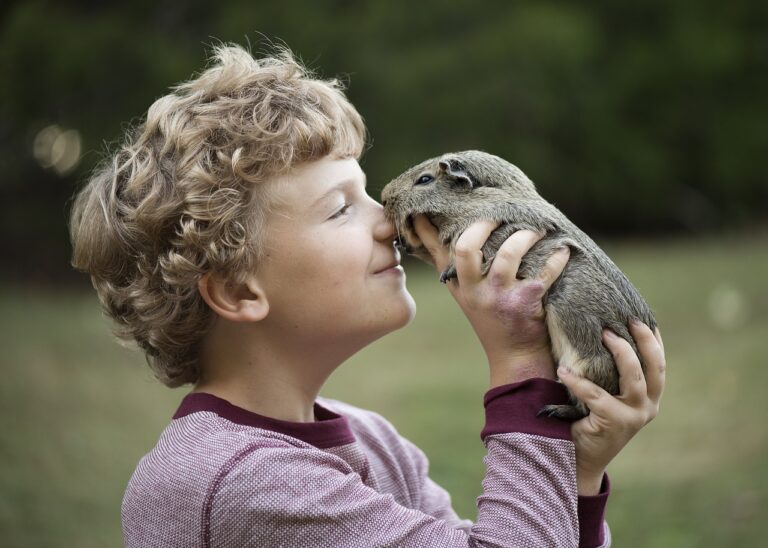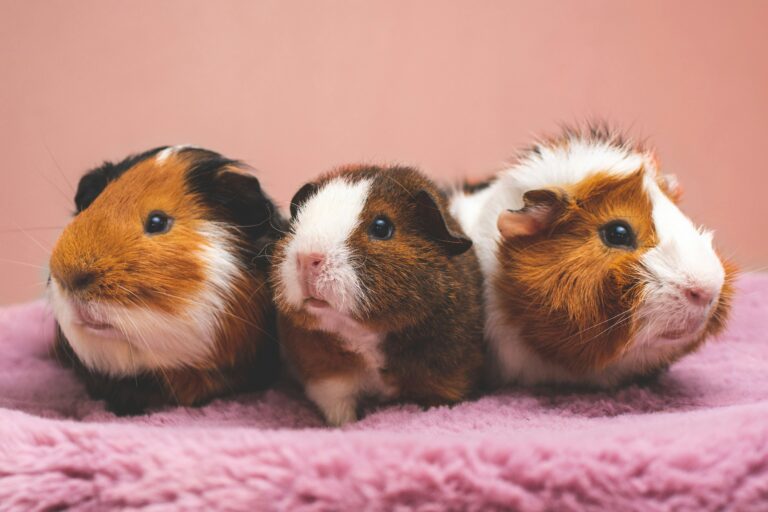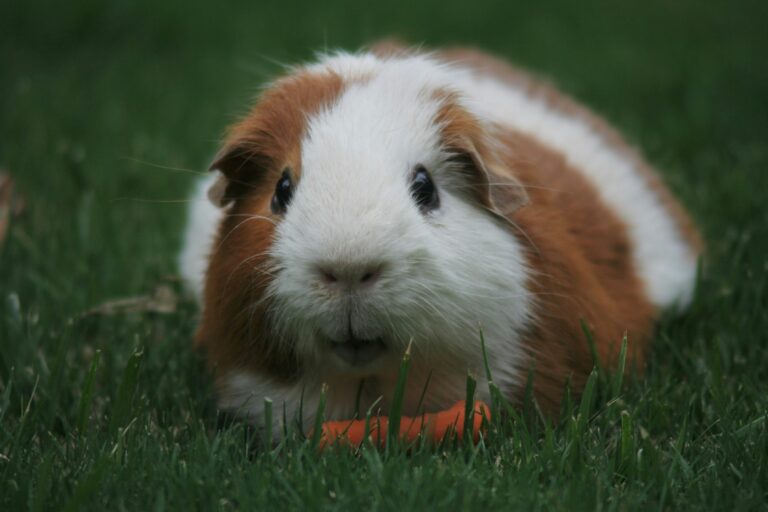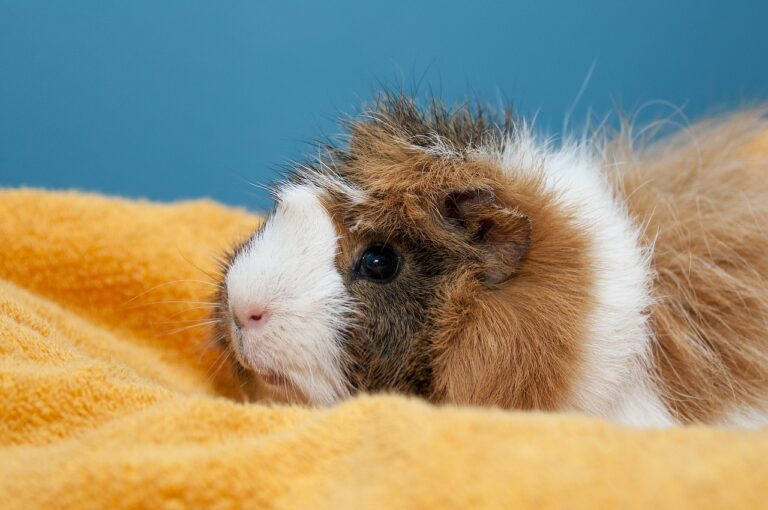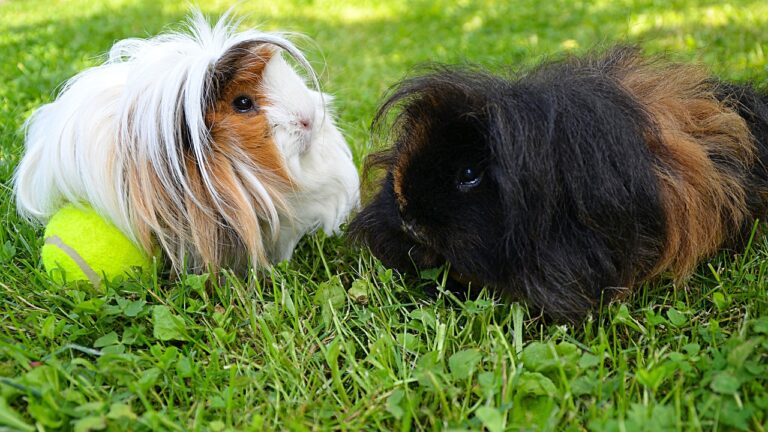What is the Difference Between a Peruvian and Silkie Guinea Pig?
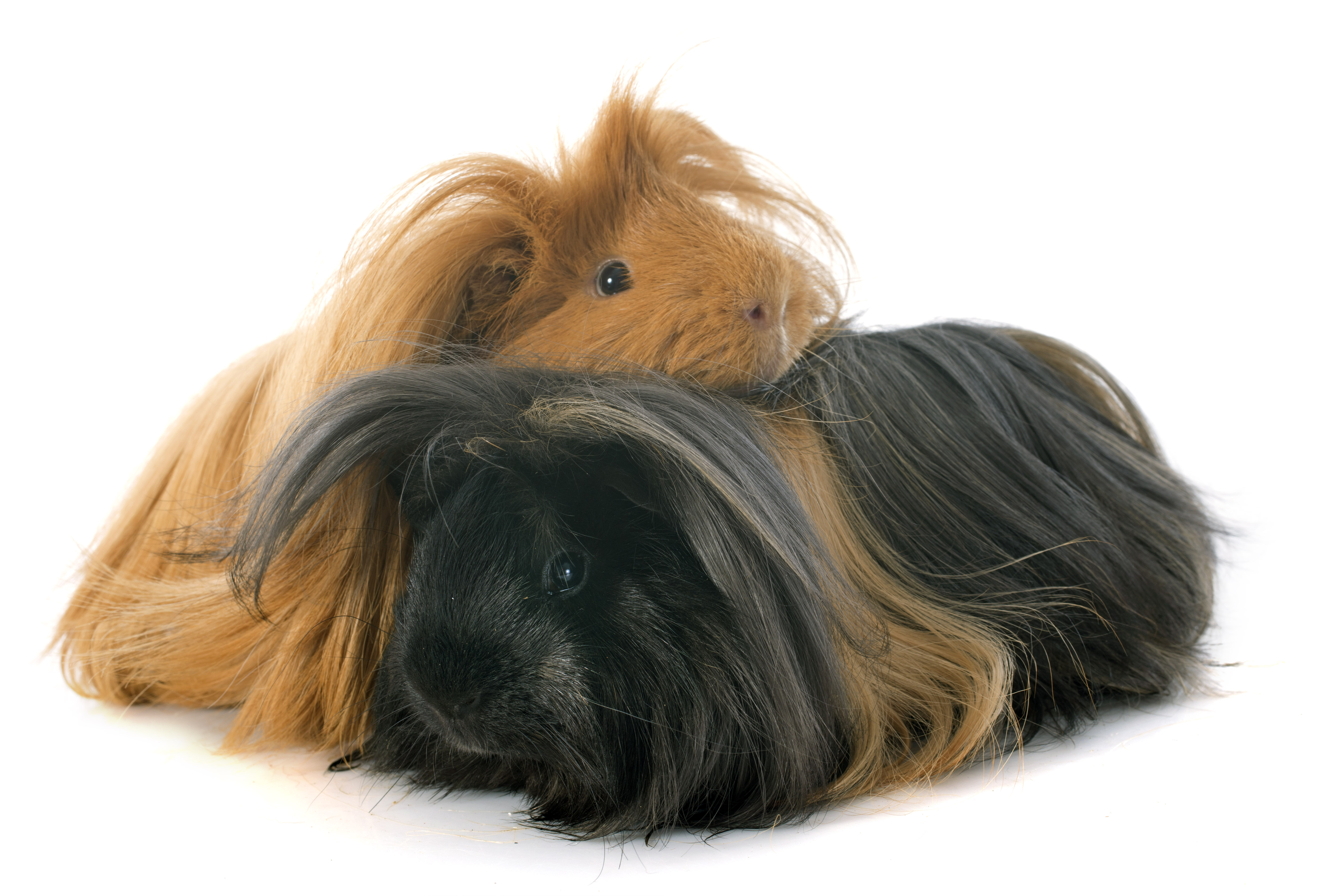
Peruvians and Silkies (Shelties) are two eye catching guinea pig breeds known for their luscious locks that can grow 20+ inches. That’s some long hair! They share many qualities, such as gentle personalities, dietary and care requirements, and general size.
With all these similarities you may find yourself asking what the difference is between Peruvians and Silkies, and the main one is rosettes! Silkies have no rosettes, so their hair flows back from their head. Peruvians on the other hand have two rosettes, one on their head and the other on their rump. These rosettes affect how their hair lays, giving them a windswept or even “punk rock” look.
Want to know more about the differences between Peruvians and Silkies? Keep reading and we will delve into some other characteristics of these two fascinating breeds, covering aspects such as their origins, physical characteristics, grooming needs, temperament, health considerations, and suitability as pets!
Origins and History
Peruvian Guinea Pig
The Peruvian guinea pig is one of the oldest breeds, believed to have originated in the Andes Mountains of South America. This breed has a long history, with ancient Incan civilizations keeping them not only as pets but also for ceremonial purposes and as a food source. Peruvian guinea pigs were introduced to Europe in the 16th century by Spanish explorers. Their long, flowing hair made them a popular choice among breeders and pet enthusiasts, leading to their spread across the continent and eventually to other parts of the world.
Silkie Guinea Pig
The Silkie guinea pig, also known as the Sheltie, is a relatively new breed compared to the Peruvian. It originated in the United Kingdom during the 1970’s, and was developed through selective breeding of Peruvians with short haired breeds. This resulted in a breed with the long hair of Peruvians but without the Peruvian’s characteristic rosettes.

Physical Characteristics
Coat and Hair Growth
One of the most noticeable differences between Peruvian and Silkie guinea pigs is their coat.
The Peruvian’s hair grows continuously and can reach lengths of up to 24 inches (pet guinea pigs likely won’t reach this length). They have a rosette on their head and a rosette on their rump. These rosettes cause their hair to swirl in different directions, creating a dramatic, flowing appearance. The rosette on their heads tends to form a “fringe” or “forelock” that can cover the guinea pig’s face, adding to their tousled or even “punk rock” look. The Peruvian’s coat requires significant maintenance to prevent matting and tangling.
The Silkie’s coat also grows continuously but their lack of rosettes causes their hair to lay differently than a Peruvian. The hair is smooth and silky, growing backward from the head and flowing down the back and sides. This gives the Silkie a sleek, streamlined appearance compared to the more voluminous coat of the Peruvian. Some Silkies have completely straight hair, and others have light waves. The Silkie’s hair is typically not as long as the Peruvian’s but still requires regular grooming to maintain its condition.
Body Structure and Size
Both Peruvians and Silkies are very similar in size. They both typically weigh 1.5 to 2.5lbs., but can range from 1 to 3lbs. They usually are about 8 to 10 inches long. Peruvians often look a bit more substantial though, because of their more ruffled locks. Silkies tend to have a more streamlined profile.
Grooming Needs
Both Peruvians and Silkies require regular grooming (several times a week) to keep their coats in tip top shape. With animals who’s fur can reach such great lengths, grooming can be a bit of a challenge. Peruvians have an added challenge in the grooming department, because their rosettes make tangles easier to form. A soft brush or wide-toothed comb can take care of tangles, but skin around the rosettes can be sensitive so keep that in mind while grooming. Silkies can also easily get tangles and mats if they are not regularly groomed, but they tend to be a bit less prone to them than Peruvians. Still brush them a few times a week to stay on top of things.
If you are having any difficulties managing their long hair, don’t hesitate to give them a little trim! Trimming, especially around the eyes and rear of your guinea pig, can help them stay clean. A clean guinea pig is a happy guinea pig!

Temperament and Behavior
Both Peruvian and Silkie guinea pigs are known for their gentle and friendly nature, making them excellent pets for families and individuals. The main difference between these breeds as far as temperament goes is that Peruvians have a tendency to be more outgoing and curious, whereas Silkies are known to be one of the most laidback breeds. Either of these traits can be great, it just depends on what you as a potential owner prefer. Keep in mind that individual temperament can also vary greatly, and one Silkie might love to get out and explore while its Peruvian counterpart might be more docile and quiet.
Health Considerations
Both Peruvian and Silkie guinea pigs can be prone to certain health issues, some of which are related to their long coats. Regular health checks and grooming can help to prevent these problems.
Common Health Issues
Skin Infections: Long-haired guinea pigs are more prone to skin infections and parasites, such as mites and lice. Regular grooming and maintaining a clean living environment can help prevent these issues.
Respiratory Infections: Like all guinea pigs, both breeds can be susceptible to respiratory infections. Symptoms include sneezing, coughing, and nasal discharge. It’s important to keep their living area clean and dry and to avoid sudden changes in temperature.
Dental Problems: Guinea pig’s teeth grow continuously, and both Peruvian and Silkie guinea pigs can develop dental issues if their teeth are not properly worn down through chewing. Providing chew toys and a diet high in hay can help prevent dental problems.
Obesity: Both breeds can be prone to obesity if not given a balanced diet and enough exercise. Monitoring their diet and ensuring they have ample space to move around can help maintain a healthy weight.
Suitability as Pets
Both Peruvians and Silkies can make awesome pets. Here’s a quick rundown if you want to compare, though:
Peruvian Guinea Pig
Pros: Peruvians are often playful and interactive, making them entertaining pets. They tend to be outgoing and enjoy exploring.
Cons: Their extensive grooming needs can be time-consuming and may require a significant commitment from the owner. Their adventurous nature means they may need more space and enrichment activities.
Silkie Guinea Pig
Pros: Silkies are gentle and affectionate, making them excellent pets for families and individuals looking for a calm and loving companion. Their grooming needs, while still important, are less demanding than those of the Peruvian.
Cons: Silkies are generally more relaxed and less active, which might not suit owners looking for a more energetic pet. They still require regular grooming, which can be a commitment.

Conclusion
Both Peruvian and Silkie guinea pigs are wonderful pets, each with unique characteristics and care requirements. The Peruvian, with its long, flowing hair and adventurous nature, is well-suited for those who can commit to regular grooming and enjoy an active pet. On the other hand, the Silkie, with its sleek coat and calm demeanor, is ideal for those seeking a gentle and affectionate companion with slightly less demanding grooming needs.
When choosing between a Peruvian and Silkie guinea pig, consider your lifestyle, the amount of time you can dedicate to grooming and interaction, and the type of companionship you are looking for. Keep in mind that you can always opt to trim your guinea pig if grooming requirements start to add up, and individual guinea pig personalities can vary!

